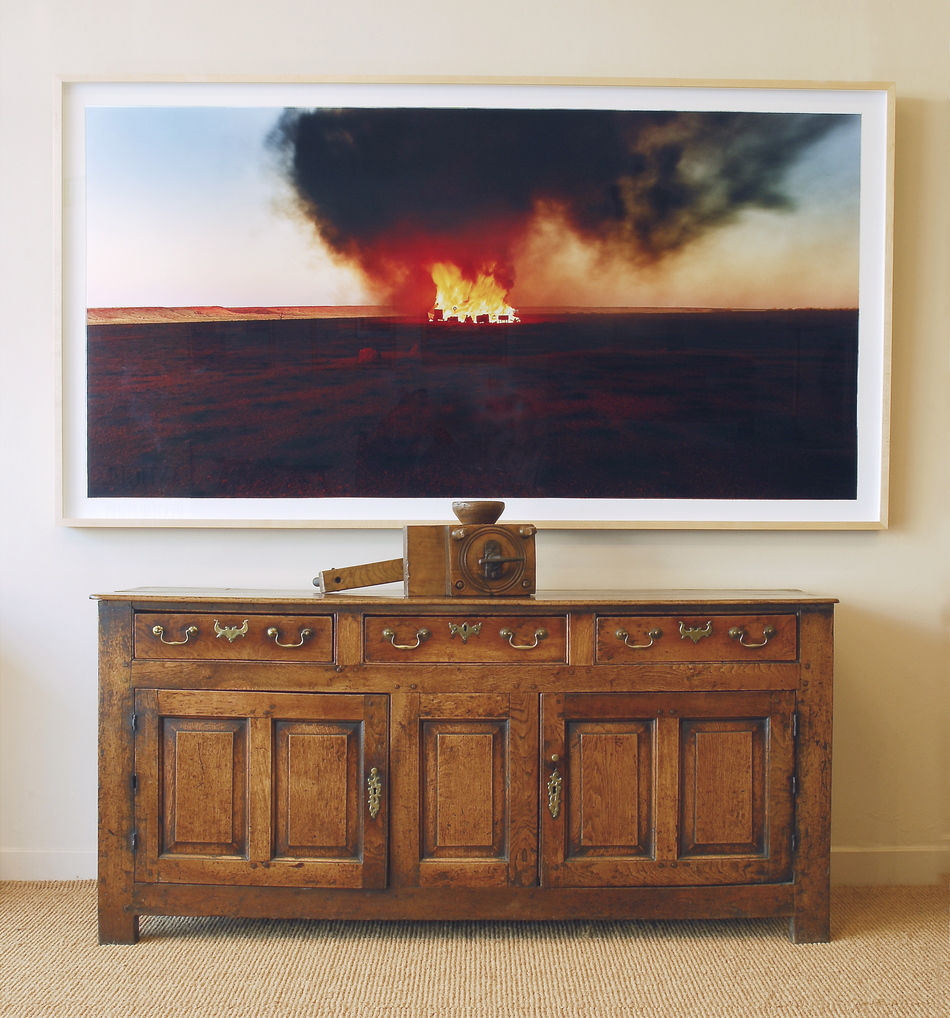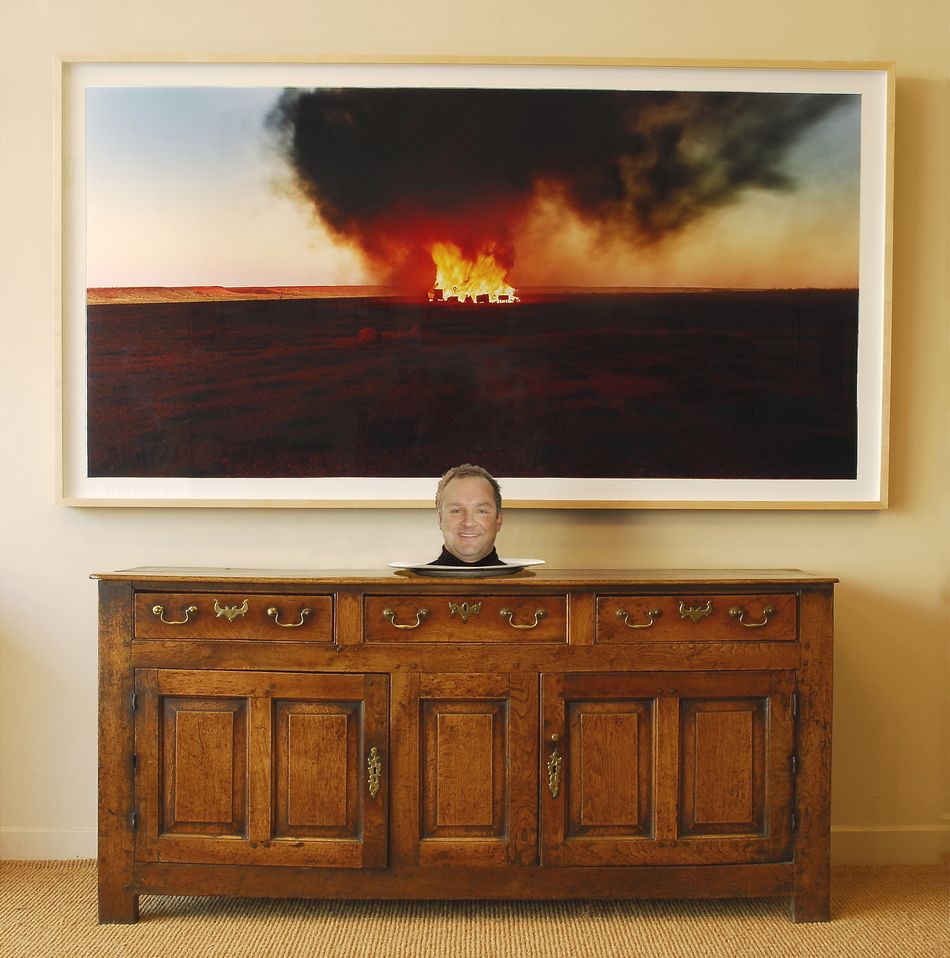Rosemary Laing -Burning Ayer #6
Rosemary Laing Burning Ayer #6, 2003 Type C Photograph 110.0 x 224.0 cm number 6 from an edition of 10
Provenance Private collection, Melbourne Exhibited ‘one dozen unnatural disasters in the Australian Landscape (part 1), Gitte Weise Gallery, Sydney, 2003 ‘‘The unquiet landscapes of Rosemary Laing’, Museum of Contemporary Art, Sydney, 23 March-5 June 2005
Illustrated This work has been illustrated and the series has been written about extensively including: ‘The unquiet landscapes of Rosemary Laing’, Museum of Contemporary Art, Sydney, 2005, illus. p.62-63 Abigail Solomon-Godeau, ‘Rosemary Laing’, Piper Press, Sydney, 2012, illus. p.131
‘For Laing, one’s place as a white Australian artist is inescapably a locus of contradiction and difficulty insofar as the indigenous people have historically been displaced. Or replaced. We find her work is always provisional, tactful, and a self-conscious investigation of her own imperfect belonging to homeland.’ (A.Solomon Godeau, Rosemary Laing, Piper Press, 2012, p. 28)
This is a climactic scene from the series ‘one dozen unnatural disasters in the Australian landscape’ 2003. In the series, spectacularly staged ‘disasters’ disrupt majestic landscape panoramas and Laing’s interventions recast the acts of invasion and colonisation as unnatural disasters; emphatic opposites to natural disasters like bushfire or flood.
The mesmerising image of flames pouring upward from Wirrimanu country near Balgo in Western Australia, has been made in the image of Uluru, with the sacred monolith fashioned from IKEA furniture powder coated in the red desert sand. The funerary pyre of a would-be Ayer’s Rock hints at disaster beyond itself.
Burning Ayer #6 riffs on the postcard trade that promotes Uluru as the essential, ancient Australia to throngs of tourist crowds. Laing takes aim at this sort of de-contextualised, pristine scenic photography that nullifies the contentious history of the site.
Godeau has said that ‘even in her deployment of a medium that freezes time forever, (Laing’s artworks) are concerned with critically mobilising the history of the present.’ So intricately researched, planned and executed are her images that the photographs represent one facet of a much larger sociological process at work beyond the picture plane.



